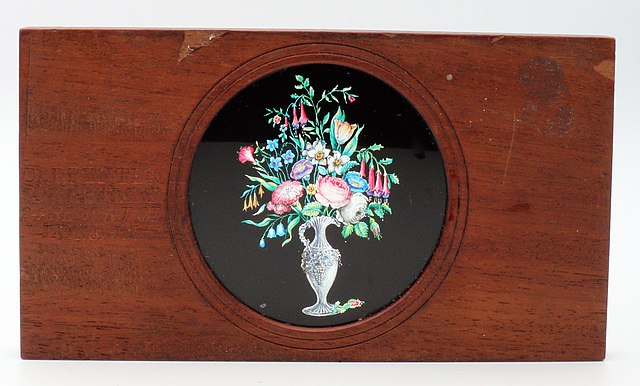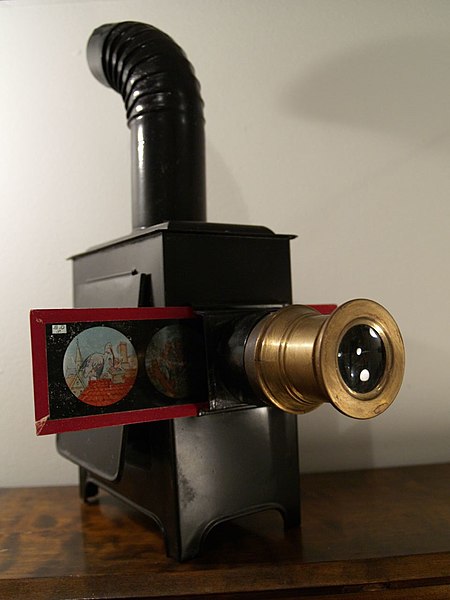Carpenter and Westley were a British optical, mathematical and scientific instrument makers between 1808 and 1914. The company was founded by Philip Carpenter and, after his death, was continued by his sister Mary Carpenter alongside former apprentice William Westley. The company's contribution to the development of magic lanterns was significant and Philip Carpenter pioneered the use of copperplate slides.
Magic lantern slide
The magic lantern, also known by its Latin name lanterna magica, was an early type of image projector that used pictures—paintings, prints, or photographs—on transparent plates, one or more lenses, and a light source. Because a single lens inverts an image projected through it, slides were inserted upside down in the magic lantern, rendering the projected image correctly oriented.
19th century magic lantern with printed slide incorrectly inserted (upright, which would be projected by the lantern as an inverted picture)
Magic lantern slide by Carpenter and Westley
A page of Willem 's Gravesande's 1720 book Physices Elementa Mathematica with Jan van Musschenbroek's magic lantern projecting a monster. The depicted lantern is one of the oldest known preserved examples, and is in the collection of Museum Boerhaave, Leiden
Illustration of Kircher's Steganographic mirror in his 1645 book Ars Magna Lucis et Umbrae




